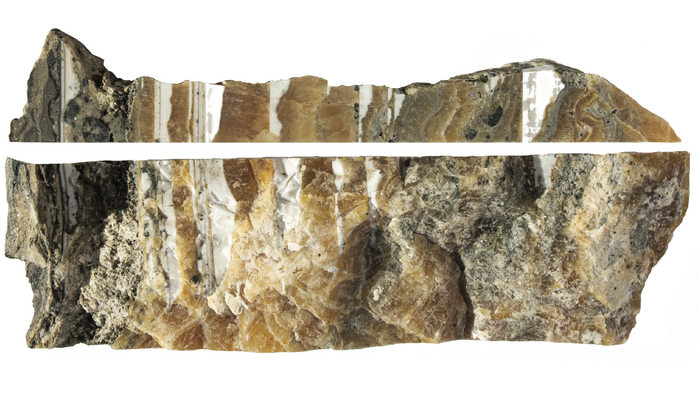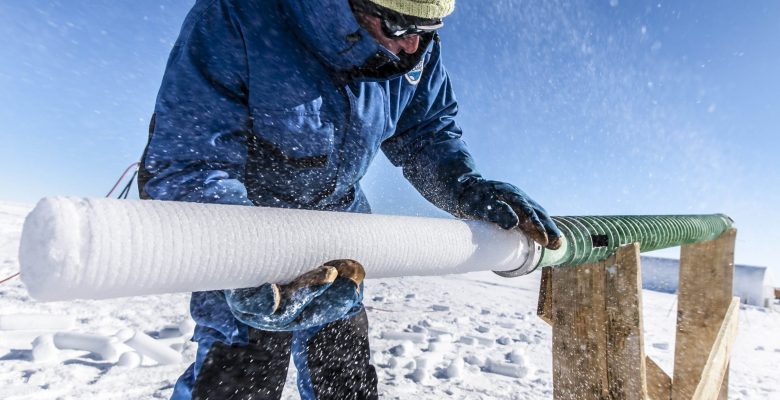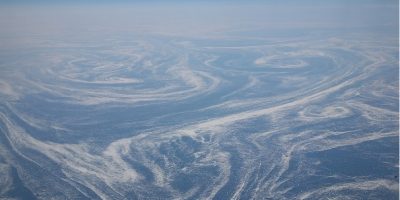By Laurie Henry
Landscapes are the result of current and past climatic conditions. Various places around the globe record information and are called natural archives. Understanding how the climate has varied naturally over thousands and millions of years teaches us how the Earth’s climate system works and sheds light on current human-induced changes.
Paleoclimatology is the study of past climates over the Earth’s geological time. Paleoclimatologists try to identify the causes of climate changes produced in the past in order to better understand our current and future climate.
Unfortunately, the data collected by modern instruments only goes back about a century, leaving natural records as the primary means of knowing past climates. Among them are lake and ocean sediments, stalactites and stalagmites in caves or even tree rings.
What are the climate factors?
Current climatic conditions depend on external characteristics such as the solar radiation received, itself a function of the power emitted by the Sun. They also fluctuate due to internal conditions: composition of the atmosphere in greenhouse gases, distribution of oceans and continents, cloudiness and albedo (the share of solar radiation that is returned to the atmosphere).
Some factors have undergone considerable variations. Since the formation of the solar system, solar radiation has increased slowly, and the composition of the atmosphere has changed a lot, leading to strong variations in the greenhouse effect and temperature. These, sometimes brutal, are at the origin of the geological eras and the five mass extinctions that occurred in the Ordovician (445 million years), the Devonian (385 million years), the Permian (252 million years). years), the Triassic-Jurassic (200 million years) and the Cretaceous-Tertiary (65 million years, disappearance of the dinosaurs).
How to study past climates through the ice?
One of the methods for determining past natural climatic variations is based on the sampling of old ice cores, extracted from glaciers. Ice is formed from snow that accumulates over hundreds of thousands of years. With each difference in constitution in the layers of ice, scientists deduce a new period (winter/summer) and thus go back the years. The deeper you dig the ice, the further back you go in geological time.
When the layers of snow compact, tiny air bubbles are trapped in them, real “snapshots” of the atmosphere at the time they were trapped. They also contain dust, ash, pollen and other particles that provide clues to past environmental conditions.
Nevertheless, past temperature is not directly accessible from ice cores. Scientists need to measure the chemical makeup of the trapped air — oxygen, carbon dioxide, and nitrogen gas. Indeed, colder temperatures lead for example to a higher concentration of a particular oxygen isotope* in the snow.
From these measurements, empirical data and models, scientists calculate past temperatures.
The past climate in marine sediments
Another important archive is the billions of tons of sediment accumulating each year in ocean and lake basins. Scientists drill sediment cores from the bottom of the basin and examine their contents, which consist of tiny fossils, dust, volcanic ash or pollen.
Just like ice, the resulting chemicals make it possible to measure the oxygen and carbon that were present at the time and to deduce past temperatures, via isotopes. The pollen, meanwhile, provides information on the type of plants living at that time, which makes it possible to model the climate more finely.
Concrete case: Antarctica reveals 100,000 years of climate change
Recently, while analyzing unusual rock samples collected in Antarctica, scientists from the University of California, Santa Cruz (Gavin Piccione et al., 2022) discovered a remarkable record that provides insight into how East Antarctica reacted climate change over a period of 100,000 years during the Late Pleistocene*.
This ice cap is the largest mass of ice in the world. Understanding its sensitivity to climate change is crucial for predicting sea level rise. Recent studies suggest it may be far more vulnerable to ice loss than previously thought.
The results of the new study, published in Nature Communications, suggest that water temperatures in the Southern Ocean are the primary mechanism driving Antarctica’s response to changes in global climate. These changes are reflected in the types of minerals deposited at the base of the ice sheet, alternating between layers of opal (cold period) and calcite (warm period).

Sample MA113 shows alternating layers between opal (white) and calcite (brown). © G. Piccione et al., 2022.
According to the NOAA (United States Oceanic and Atmospheric Observation Agency), paleoclimate records from these different sources and associated research indicate that past warming episodes have often induced many of the climate impacts that occur today: an increase significance of global temperatures; rising and acidifying oceans; and the melting of polar ice.
Paleoclimate research is essential for predicting how increasing amounts of atmospheric carbon dioxide will alter Earth’s climate. These projections inform how societies can mitigate and adapt to the impacts of climate change.
*Isotope: isotopes are atoms of the same element that are heavier or lighter depending on the number of neutrons in its nucleus. The two most common isotopes of oxygen found in nature are oxygen-16 (lighter) and oxygen-18 (heavier). The first is in greater quantity in the ice when the temperatures are cold.
*Upper Pleistocene: geological era beginning around 126,000 years ago and ending around 11,700 years ago.


